Update 7/19/14: You can download the newer version of the calculator here.
Bob McCarthy’s method for designing uncoupled speaker arrays can take a lot of guesswork out of using MAPP. To further streamline the process, I made a calculator that describes the relations between the parameters of speakers in uncoupled arrays.
The important parameters are the spacing of the elements (s), the splay of the elements (β), each element’s coverage (φ), the distance at which the coverage patterns of adjacent speakers overlap (D-Unity), and the distance at which three elements overlap (D-Max). For simplicity’s sake, I have made some intermediate parameters:
To find unity distance with known spacing and splay:
To find spacing with a known unity distance and splay:
To find maximum distance:
To find splay angle with know unity distance and spacing:
And something new in version 1.3: a calculator for distributing front fill along a curved stage, for instance, because here splay and spacing are linked.
Using the width of the stage’s arc and its height, along with speaker coverage and the unity distance (in this case the distance from the stage lip to the front row), the calculator finds the stage’s radius and calculates the spacing and splay together:
And that’s it. The calculator will probably be updated again soon, so email me at if you’d like the latest version.

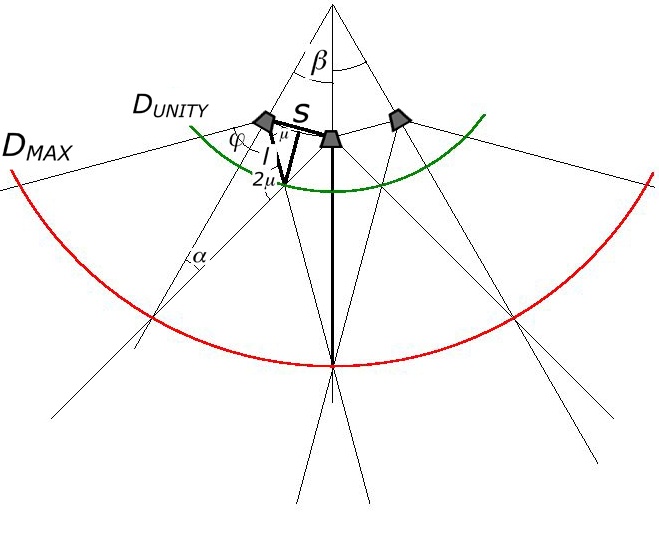
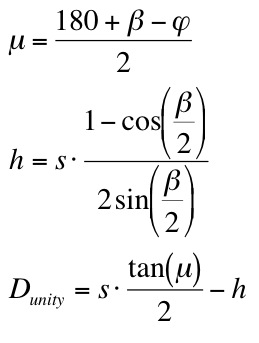
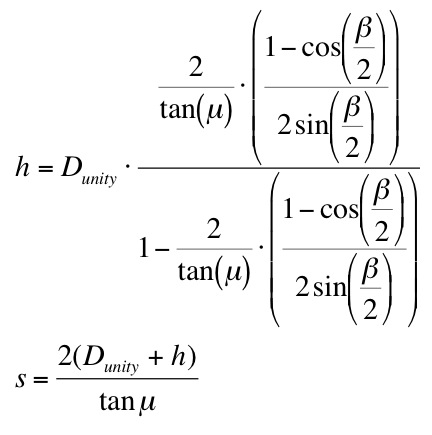
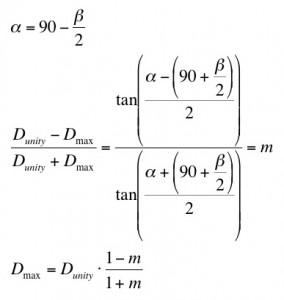
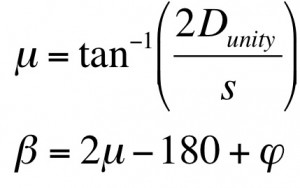
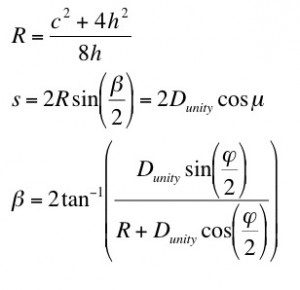
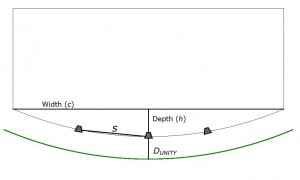
This is great Daniel! So, stupid question, you are always calculating for 3 elements, right? To calculate for more or less I would just divide by the number of intervals between elements in the case of the unity distance calculation?
Nathan,
Not sure what you are saying – the calculation is true for an infinite number of speakers (unless, of course, they are splayed and curved, in which case they’ll eventually go in a circle). So, for instance, if the unity distance between your 100˚ speakers at a spacing of 5′ and splay of 0˚is 3.3′, it’ll be 3.3′ from the speaker to the unity line regardless, and you can make the unity line longer by adding more speakers to the row. If you are only dealing with two speakers, however, the limit distance does not apply (for any number 3 or larger it does). Hope that helps.
Best,
Daniel
Hello Daniel,
I’m a bit confused about the term “unity distance”. What is it exactly? Which would be the preferable sweet spot for the audience? In uncoupled arrays we’re mostly talking about the front row of audience (if those aren’t subs). So should I look at maximum distance of speakers or should I aim for this unity distance, in which the audience should be in?
Hello Alberts,
Unity distance is the phrase Bob McCarthy uses to describe the distance from the speaker where the coverage is really even (less than 6 dB of variance).
The coverage will be really even anywhere in between the unity distance from the speaker and the maximum distance. Closer than the unity distance, some seats will be much louder than others; farther the maximum distance, the speakers will phase with each other a lot.
For front fill speakers, try making the unity distance the distance from the speaker to the nearest listener. Hopefully by the time you’ve hit maximum distance, the main PA has taken over. Some other common uses of this calculator include delay rings (like under-balconies), parade routes, and ceiling speakers.
Hope that helps!
Daniel
Hey Daniel-
I am so happy to see your trig shown, what a great teaching tool! The last time I used a white board and did a trig calc on a shop floor to get an answer, some people seemed AMAZED at what a little college math could tell you. Nice job, great tool!